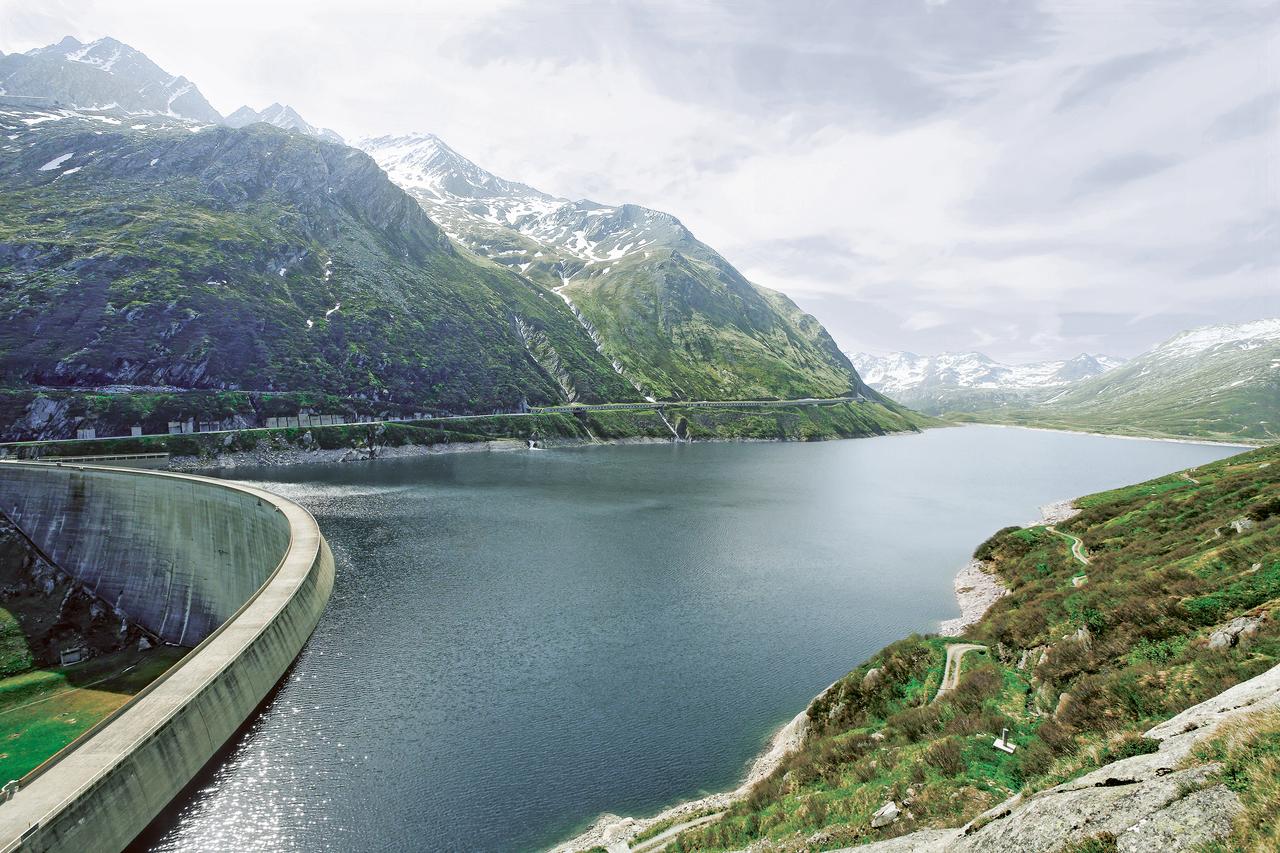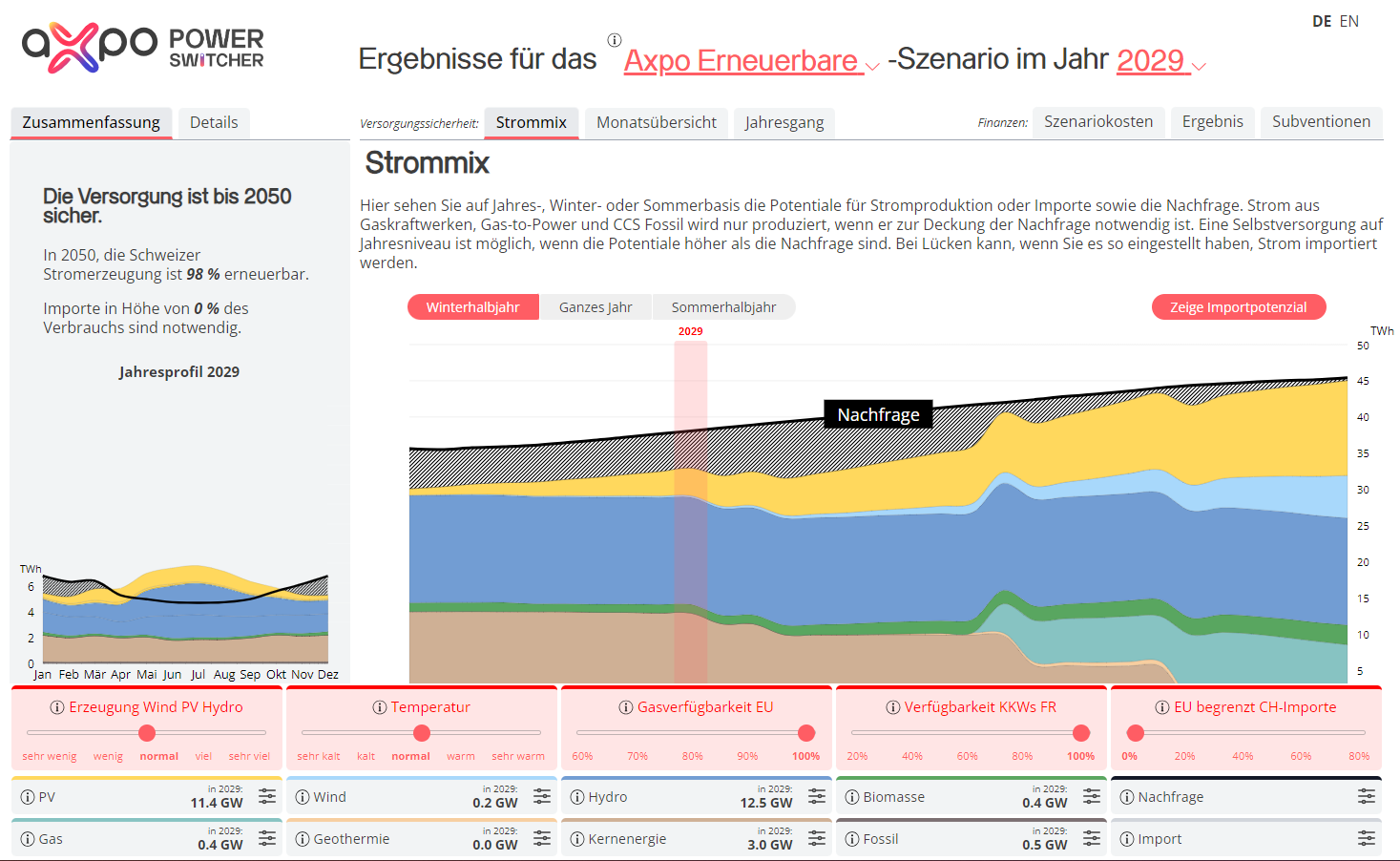11.05.2023 | Security of supply? We take care of it - today with Rainer Lietzow
Disconnecting powerlines without interrupting supply – how?
Whether powerlines or transformers are disconnected for maintenance or a line is struck by lightning, Axpo customers need a secure and reliable power supply at all times. That’s the responsibility of Rainer Lietzow, Head of Projects and Operations Planning at Axpo, and his team.

The Axpo electricity grid is 2,200 kilometres long and comprises 8,500 masts. The electricity is transformed to the respective required voltage level by 152 substations. The Axpo grid stretches from Aarau in the west to the Principality of Lichtenstein in the east, and from Singen in Germany in the north to the canton of Zug in the south. The electricity flows from the Swissgrid transmission grid and the local hydropower plants into the Axpo transregional distribution grid and, from there, on to its customers, the cantonal and city utilities in northeastern Switzerland and the Principality of Lichtenstein. Via its grid and its power plants, Axpo reliably supplies more than 3 million end consumers indirectly with electricity – around the clock, 365 days a year.
Given this responsibility, it’s important the grid be reliably managed, monitored and kept in good condition. The entire infrastructure has to be maintained regularly in stages, old facilities must be replaced and new ones connected to the grid. The only problem is that work cannot be carried out on facilities when electricity is being distributed. They need to be disconnected first.
Complex planning
There are always risks associated with shutting down a section of the grid. ‘We’re always considering “what if X or Y happens?”, analysing a wide range of scenarios, minimising risks and developing emergency plans so we can supply our customers with power again as quickly as possible where necessary,’ explains Rainer Lietzow. He is Head of Grid Projects and Operations Planning, and he and his team at the Axpo headquarters in Baden – in the energy and grid control centre – are responsible for grid security, so that facilities connected to the Axpo grid can be disconnected according to plan – an exceptionally complex process.
A redundantly designed electricity grid
Operations are planned over a timeline of several years and broken down into hours – all in consultation with Axpo project and plant managers as well as partners at Swissgrid and the cantonal and city utilities. Only once all the preparations are in place can the specialists from grid control safely disconnect a line or a transformer. It goes without saying that electricity flow on the grid cannot be disrupted. This is made possible by the electricity grid’s redundant design (see box).
‘A secure electricity supply is top priority in everything we do,’ says Rainer Lietzow, summing up his job. He gives the air of someone who is circumspect, pragmatic and calm, yet fully alert. He’s also an excellent communicator – a good mix for a job so central to supply logistics. He has worked as an electrical engineer at Axpo since 1999 and been in his current position since 2016. He and his crew have several decades of experience between them and work well together as a team.
When lightning strikes
In addition to the scheduled disconnection of network components, unplanned disruption can also occur. The forces of nature are often at play here. For example, storms or lightning can cause damage to the grid, but humans also cause incidents. An outside company might drill into a ground cable line during construction work, for instance. The operators of the energy and grid control centre are on alert around the clock. In the event of a fault, the protection systems always automatically switch off the affected grid area. Automatic reconnection usually takes a few seconds. If this is not the case, the experts in the operations centres must be called in to determine and repair the damage.
The energy and grid control centre is the ‘brain’ of the grid system, so to speak, and the premises are secured accordingly. Access is strictly regulated. The centrepiece is the control room, where maps, graphics and rows of numbers are displayed on two metre-wide display boards. The system processes around 60,000 messages and 25,000 measured values. There is no trace of hustle and bustle. The mood is concentrated but relaxed
Worst-case scenario: practising on the simulator
This is also where practice for a potential large-scale power outage in Switzerland happens – if it all goes dark and the public telephone lines go quiet. The energy and grid control centre must be able to act, which is why it has its own power supply and telephone network, including satellite connection. ‘We have defined clear processes so that we can secure the reconstruction of the network as quickly as possible. We also practice these worst-case scenarios annually with Swissgrid and the power plants on the simulator. Fortunately, no emergency of this magnitude has occurred so far. We are doing everything we can to ensure that this remains the case in the future,’ adds Rainer Lietzow.
Up-to-date information on your phone with the app
Axpo worked with a software company to develop the Incident Management app. It merges all the information required to run the Axpo electricity grid securely and reliably. Interruptions are logged quickly and all responsible positions promptly informed of all events – both planned and unplanned – on a running basis. Each measure taken in connection with these is documented in the app to ensure all those involved are kept up to date at all times.
N-1: the formula for a secure electricity supply – Axpo comes out top internationally
A transformer has been disconnected, a crane has come into contact with a line and put it out of action – but electricity continues to flow uninterrupted through the grid. How is that possible? The answer? Both the Axpo grid and the Swiss electricity grid as a whole have a redundant design. The same applies to the rest of Europe. The redundancy formula is called N-1. According to the N-1 rule, if a grid component fails, whether planned or not, a fallback option must always be in place at maximum capacity, i.e. if one powerline fails, the electricity can ‘simply’ flow via another line. Axpo has top ratings in Switzerland when it comes to security of supply, also making it a top performer internationally.




.jpg)





